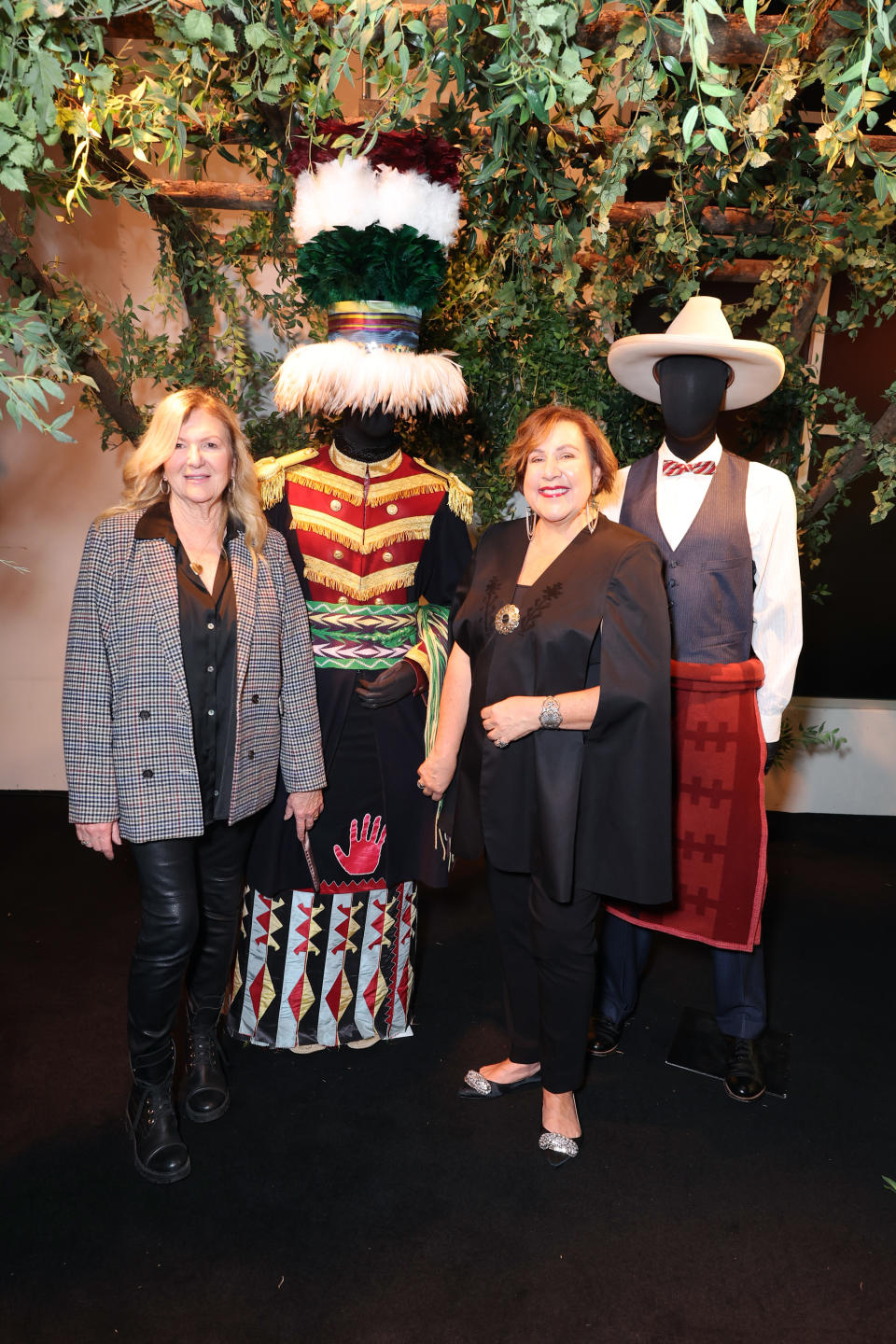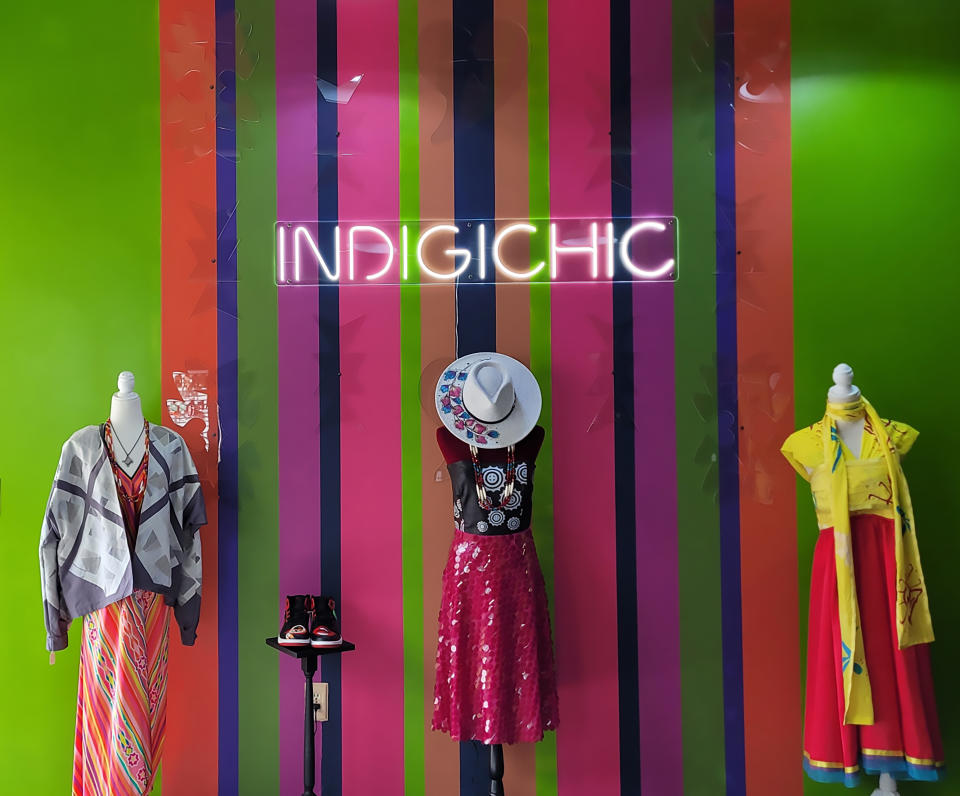How the ‘Killers of the Flower Moon’ Osage Clothing Consultant Is Paying It Forward
- Oops!Something went wrong.Please try again later.
- Oops!Something went wrong.Please try again later.

“From my perspective, they’re not costumes. Everything was authentic and is something we’re still wearing today,” said Osage clothing consultant Julie O’Keefe of collaborating with costume designer Jacqueline West and 20 Osage artisans to craft looks for “Killers of the Flower Moon,” in theaters now.
Based on David Grann’s 2017 nonfiction book “Killers of the Flower Moon: The Osage Murders and the Birth of the FBI,” the Martin Scorsese film tells the tragic true story of members of the oil-rich Osage tribe who were murdered under suspicious circumstances during the 1920s. It stars Leonardo DiCaprio, Lily Gladstone, Robert De Niro and Jesse Plemons.
More from WWD
Dick's Sporting Goods Brings Momentum Into the Holiday Season
Consumer Mindfulness Shapes Holiday Shopping Trends Amid Rising Prices, Finds Klarna Survey
Authenticity in representation of the Osage was crucial to Scorsese, said West. “Once a week I would talk to Marty, and I sensed his one desire, and the reason he wanted to shoot on the Osage nation and involve chief Standing Bear and the tribal government, having dinners with them and getting their input, was to create a certain trust.”

O’Keefe, who grew up on the Osage reservation in Pawhuska, Okla., had the right experience — first working at a local dress shop that had been around since the oil boom, then studying fashion merchandising and working in product development in Washington, D.C., and returning home recently when she began buying for the First Americans Museum shop in Oklahoma City.
She started as a consultant to West, but ended up staying on through the entire production, using many of the artists she’d established relationships with through the museum to make pieces for the film.
“After the movie, I went on to work as an Indigenous consultant on ‘American Primeval’ and convinced Netflix to put 40 percent of their budget — costume, prop and set — into artisans, including teepee makers…I realized I had stumbled into a mission of wanting to showcase Native artisans,” O’Keefe said.
For “Killers of the Flower Moon,” Supernaw, a well-known Oklahoma silversmith, crafted many of the distinctive scarf slides worn by Osage men. One is shaped like a heart, another a half moon with a star, “which is a Native church symbol,” O’Keefe explains. “Different slides tell different stories.”
Blankets are almost a character in and of themselves in the film. Non-Native owned Pendleton recreated 1,500 designs from the ’20s for the production, down to the authentic ’20s labels. But the ribbon-work blankets, including one worn by Mollie (Lily Gladstone) were made by Marie Lookout.

“The Lookouts are well known for ribbon work,” said O’Keefe. “A lot of them were made with French ribbon that we traded for. That blanket has 27 yards of ribbon on it…You wear ribbon blankets to honor someone, to show up as a diplomat or delegation doing business, or to honor the family on family days,” she said.
Molly Murphy Adams was responsible for making three hand-beaded blankets in just five weeks’ time.
“Molly Murphy Adams, who’s Oglala Lakota, is very well known for museum quality bead work,” O’Keefe said, pulling out a tuxedo jacket from her own closet to show off beaded patches made by Murphy Adams. “When you go into her studio, she has all of these beads that she’s collected organized by country and year…And you have to love the ingenuity of artists. When I walked in, she had the two-yard wool fabric I’d given rolled over a pool noodle and 40 needles pre-threaded with all of her beads that were going like a machine.
“It’s those skills that everyone complains that we’ve shipped overseas but if you look in your communities in every single state in this country, you’re gonna find Native artists. They’re still using their hands producing these things. And a lot of it is generational set at a kitchen table. That’s the fabric of who we are here in the United States, and we overlook it.”
That craft is what O’Keefe is committed to showcasing more broadly through film, TV and now retail. She’s partnered with designer and professor Jessica Harjo and a few other Osage artists and curators to open a pop-up shop called Indigichic in Tulsa, Okla., featuring contemporary Native American artisans’ work.
“What we were wanting was an immersive experience…focusing on the 39 nations of Oklahoma, fashion and accessories,” O’Keefe said, adding that Gladstone wore one of Harjo’s dresses to the Osage premiere of the film.

One of items in the store is a hand-painted parfleche belt by Katelynn Pipestone. “If you want to see the Louis Vuitton of Indigichic, this is it,” O’Keefe said. “We are wanting to showcase all these amazing artisans who are doing things that can be worn in a contemporary way. That belt belongs on the red carpet.”
Indigichic will be open until Jan. 13, and a couple of museums have expressed interest in hosting the pop-up in the future.
Apple Studios, which backed the film, has an exhibition of the film’s costumes at its Culver City, Calif., campus titled “Beyond the Scene,” which includes 17 of the Osage looks, and is open Nov. 28 to Dec. 1 by reservation at killersoftheflowermoonexhibit.com.
And O’Keefe is committed to continuing to pay her experience forward.
“Natives have been waiting a very long time to have the proper representation in Hollywood. And this project has all the authentic bells and whistles you would ever want because that is the level that Marty put in it. He surrounded himself with people that are truly committed to authenticity with integrity, and I think that is now where Hollywood is standing…We want to be represented the way we should be. And they want to represent us that way. The best history tellers are artists, and there is a new world for Hollywood to open up to include those artists.”
Best of WWD

